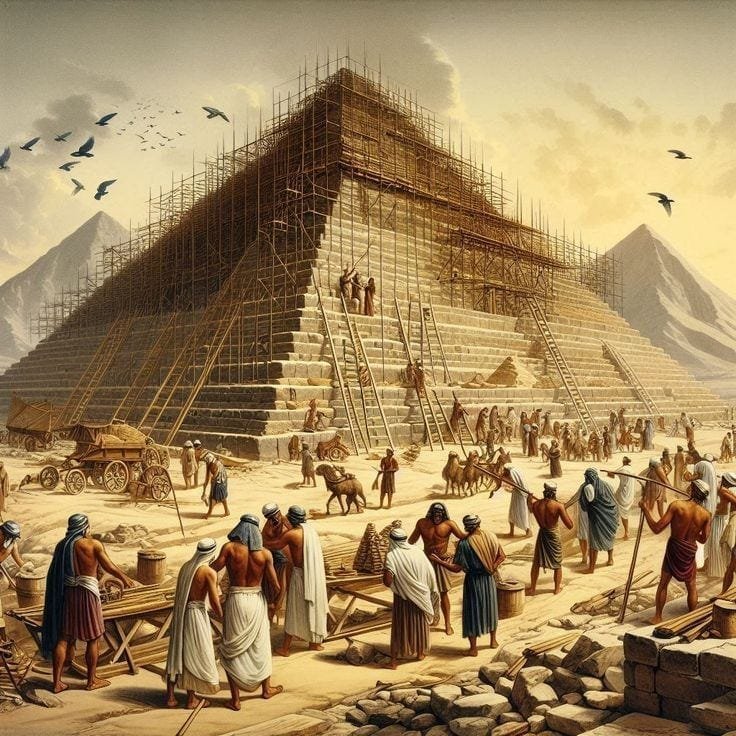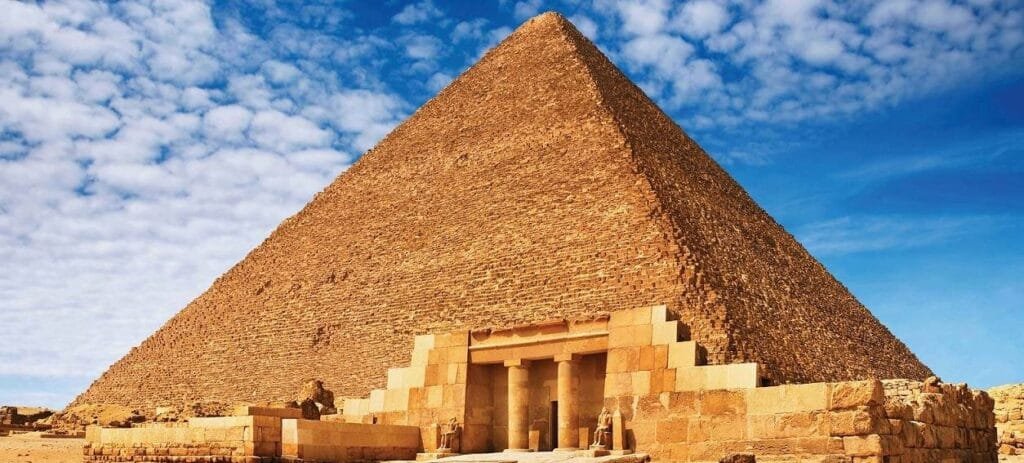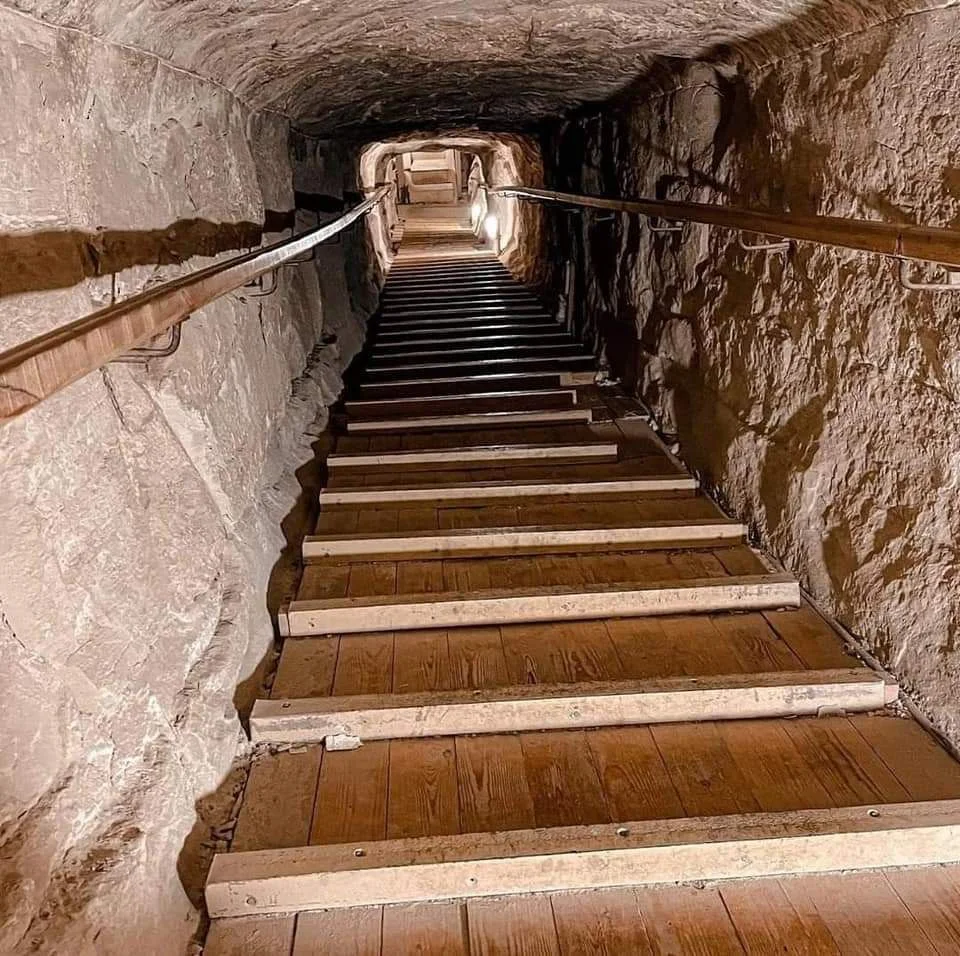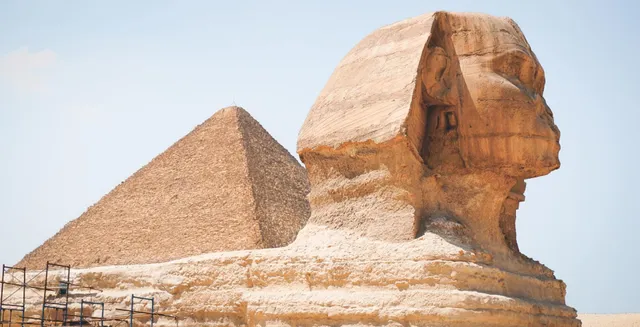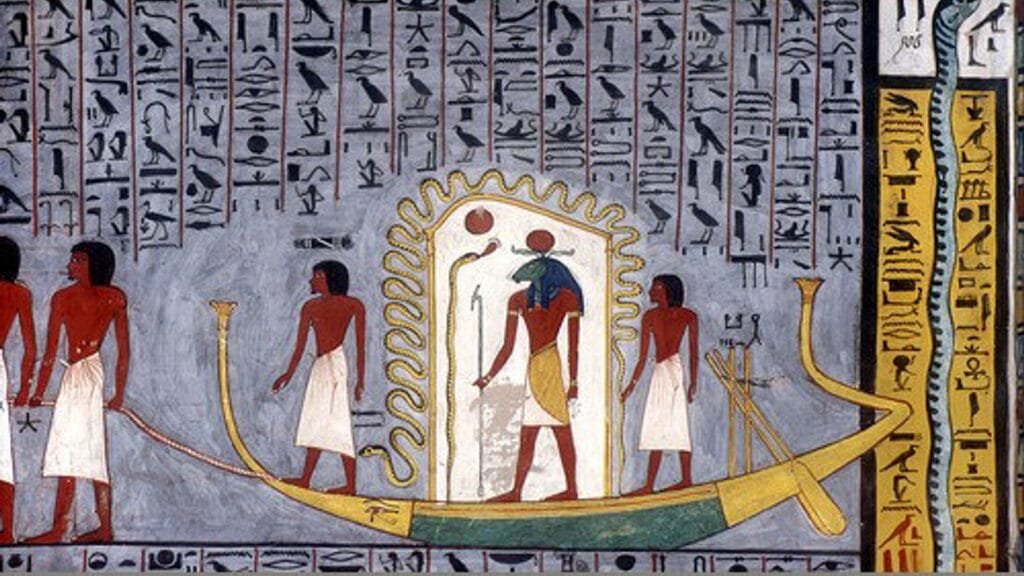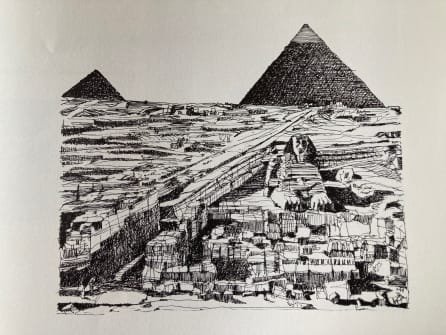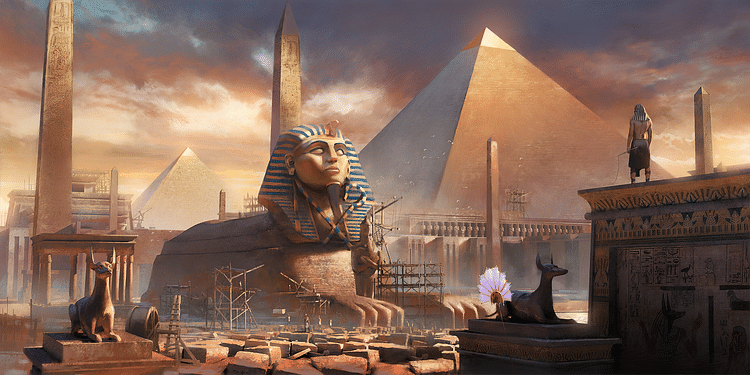The Great Pyramid of Giza stands as one of the most iconic and enduring symbols of ancient Egypt, attracting millions of visitors and scholars from around the world. Built over 4,500 years ago during the reign of Pharaoh Khufu, this awe-inspiring monument continues to captivate the imagination, offering a glimpse into the ingenuity and power of ancient Egyptian civilization. With its precise construction, complex internal design, and mysterious purpose, the Great Pyramid has long been a subject of intrigue and exploration. From the monumental size of its structure to the advanced engineering techniques employed, the Great Pyramid represents a pinnacle of ancient architectural achievement. But even with centuries of study, many of its secrets remain unsolved. In this article, we will delve into the mysteries surrounding the Great Pyramid, examining its construction, purpose, astronomical alignment, and lasting impact on both ancient and modern Egypt. Join us as we explore the enduring legacy of the Great Pyramid of Giza!
- Egypt Tour Magic
- Egypt Tour Packages
- Excursions in Egypt
- Cairo Tours and Excursions
- Hurghada Tours and Excursions
- Soma Bay Tours and Excursions
- Makadi Bay Tours and Excursions
- Sahl Hasheesh Tours and Excursions
- El Gouna Tours and Excursions
- Marsa Alam Tours and Excursions
- Port Ghalib Tours and Excursions
- El Quseir Tours and Excursions
- Dendera and Abydos Day Tours
- Aswan Tours and Excursions
- Luxor Tours and Excursions
- Alexandria Tours and Excursions
- Sharm El Sheikh Tours and Excursions
- Top Rated Tours in 2025
- Optional Excursions in Egypt
- Private Transfer
- Blogs About egypt
- Ancient Egypt
- What You Need To know Before Your First Trip To Egypt
- Best Places to Visit in Egypt 2025
- Top Attractions in Red Sea Resorts 2025
- Top 10 Tourist Activities in Egypt
- Top 30 Activities You Can’t Miss in Egypt
- The Guide to Guided Tours in Egypt
- Egypt’s Ancient and Modern History
- The Nile River
- The Deserts of Egypt
- Historical Sites in Egypt
- Cairo
- Alexandria
- Luxor
- Aswan
- The Red Sea
- Dendera Temple
- El Fayoum Oasis
- Bahariya Oasis
- Siwa Oasis
- Al Alamein
- Marsa Matruh
- Ancient Egyptian gods
- famous Egyptian dishes
- UNESCO World Heritage sites
- About Us
- Why Egypt Tour Magic
- Egypt Tour Magic
- Egypt Tour Packages
- Excursions in Egypt
- Cairo Tours and Excursions
- Hurghada Tours and Excursions
- Soma Bay Tours and Excursions
- Makadi Bay Tours and Excursions
- Sahl Hasheesh Tours and Excursions
- El Gouna Tours and Excursions
- Marsa Alam Tours and Excursions
- Port Ghalib Tours and Excursions
- El Quseir Tours and Excursions
- Dendera and Abydos Day Tours
- Aswan Tours and Excursions
- Luxor Tours and Excursions
- Alexandria Tours and Excursions
- Sharm El Sheikh Tours and Excursions
- Top Rated Tours in 2025
- Optional Excursions in Egypt
- Private Transfer
- Blogs About egypt
- Ancient Egypt
- What You Need To know Before Your First Trip To Egypt
- Best Places to Visit in Egypt 2025
- Top Attractions in Red Sea Resorts 2025
- Top 10 Tourist Activities in Egypt
- Top 30 Activities You Can’t Miss in Egypt
- The Guide to Guided Tours in Egypt
- Egypt’s Ancient and Modern History
- The Nile River
- The Deserts of Egypt
- Historical Sites in Egypt
- Cairo
- Alexandria
- Luxor
- Aswan
- The Red Sea
- Dendera Temple
- El Fayoum Oasis
- Bahariya Oasis
- Siwa Oasis
- Al Alamein
- Marsa Matruh
- Ancient Egyptian gods
- famous Egyptian dishes
- UNESCO World Heritage sites
- About Us
- Why Egypt Tour Magic
A Journey into Ancient Egyptian Religion and Spirituality
1. The Great Pyramid's Construction: A Feat of Ancient Engineering
The Great Pyramid of Giza, built for Pharaoh Khufu around 2580 BCE, is a marvel of ancient Egyptian engineering. It is the largest and oldest of the three pyramids on the Giza Plateau, originally standing at 481 feet (147 meters) tall, although it now reaches 455 feet (138 meters) due to the loss of its outer casing stones. The pyramid was constructed with an estimated 2.3 million blocks of limestone, each weighing between 2.5 and 15 tons. The precision with which these massive stones were cut and placed is astounding. Even after thousands of years, the pyramid’s alignment with the cardinal points of the compass remains nearly perfect. The exact methods used to build the pyramid are still a subject of debate, but theories suggest a combination of ramps, levers, and advanced knowledge of geometry. This incredible feat of engineering continues to captivate historians and visitors alike.
2. The Purpose of the Great Pyramid: A Royal Tomb
The primary purpose of the Great Pyramid of Giza was as a tomb for Pharaoh Khufu (also known as Cheops). In ancient Egypt, pyramids served as monumental burial sites for the pharaohs, ensuring their transition to the afterlife. The pyramid’s interior consists of several chambers, including the King's Chamber, which housed Khufu’s sarcophagus, and the Queen's Chamber, although it likely didn’t belong to Khufu’s queen. The alignment of the pyramid and its complex internal structure was designed to facilitate the pharaoh’s journey into the afterlife. The pyramid was intended to protect the pharaoh’s body and treasures from grave robbers and to ensure his immortal status. The Great Pyramid was originally encased in smooth, white limestone, making it gleam in the sun and symbolizing the eternal nature of the divine kingship. Today, visitors can explore these chambers and imagine what it might have been like during its original use.
3. The Great Pyramid’s Interior: Chambers and Passageways
Inside the Great Pyramid of Giza, the architectural design is as awe-inspiring as the structure itself. The pyramid’s internal layout is comprised of a series of chambers and passageways, most notably the King’s Chamber, the Queen’s Chamber, and the Grand Gallery. The Grand Gallery is an impressive, narrow passage that leads to the King’s Chamber, which contains an empty granite sarcophagus. The walls of the King’s Chamber are made of massive blocks of granite, which were transported from Aswan, over 500 miles away. The Queen’s Chamber, located beneath the King’s Chamber, has a more mysterious purpose, as no definitive burial was found within it. The pyramid’s interior is highly complex, with narrow passageways and ventilation shafts that many believe were used for symbolic purposes, such as connecting the pharaoh’s soul with the stars. Exploring the interior reveals the incredible precision and complexity that went into creating the pyramid’s design.
4. The Great Pyramid’s Alignment: Astronomical Precision
One of the most fascinating aspects of the Great Pyramid of Giza is its alignment with astronomical features. The pyramid is precisely aligned to the cardinal points of the compass—north, south, east, and west—within a fraction of a degree. This alignment is so accurate that it continues to intrigue modern scientists and historians. The ancient Egyptians used their advanced knowledge of astronomy to position the pyramid in a way that reflected their religious beliefs about the afterlife. It’s believed that the pyramid’s orientation was linked to the movement of the stars, particularly the circumpolar stars, which were associated with the gods and eternal life. The alignment also reflects the Egyptians' understanding of the sun’s position and its symbolic importance in their culture, as the pharaohs were considered to be the living embodiment of the sun god Ra. This precision in construction reveals the incredible sophistication of ancient Egyptian science and engineering.
5. The Great Pyramid’s Mystery: The Missing Casing Stones
Originally, the Great Pyramid of Giza was encased in smooth, white limestone casing stones that reflected the sunlight, making it shine brightly during the day and visible from miles away. However, over time, most of these casing stones were removed, either for use in other building projects or due to natural erosion. Today, only a few casing stones remain at the base of the pyramid, leaving the rough inner core exposed. The removal of the casing stones has also led to the loss of a key element of the pyramid’s aesthetic and structural integrity. The missing casing stones have long been a topic of mystery. Some scholars believe that the smooth surface would have made the pyramid gleam like a jewel, creating a brilliant effect that would have been visible from the surrounding area. The pyramid’s current appearance—rough and weathered—reminds visitors of the passage of time and the enduring mystery of ancient Egypt.
6. The Great Pyramid and the Sphinx: The Guardian of Giza
Standing guard at the entrance to the Great Pyramid of Giza is the Great Sphinx, one of the most iconic and enigmatic monuments in the world. The Sphinx is a colossal statue with the body of a lion and the head of a pharaoh, widely believed to represent Khafre, the ruler who built the second pyramid on the Giza Plateau. The Great Sphinx is carved from a single piece of limestone and measures over 240 feet (73 meters) in length and 66 feet (20 meters) in height. It is thought to have been constructed to serve as a protective guardian of the pyramids, symbolizing strength, wisdom, and the divine authority of the pharaohs. Over time, the Sphinx has undergone significant erosion, but it continues to captivate visitors with its mysterious expression and monumental size. The relationship between the Sphinx and the pyramids remains a subject of fascination for archaeologists and tourists alike.
7. The Great Pyramid’s Role in Egyptian Religion
The Great Pyramid of Giza held immense religious and symbolic significance for the ancient Egyptians. It was not just a tomb but also a spiritual gateway for the pharaoh’s journey to the afterlife. The pyramid’s design and placement were deeply intertwined with Egyptian religious beliefs, particularly their views on immortality and the gods. The pharaoh, considered the earthly embodiment of the god Ra, was thought to ascend to the heavens after death. The pyramid’s shape, with its four triangular faces converging at a point, symbolized the sun’s rays and the pharaoh’s ascent to the gods. The Pyramid Texts, inscribed on the walls of royal tombs, outlined the pharaoh’s journey through the afterlife. The pyramid’s alignment with stars and celestial bodies reinforced the pharaoh’s connection to the divine. In this way, the Great Pyramid of Giza was a monumental expression of the ancient Egyptians’ religious cosmology and the eternal nature of their kings.
8. The Great Pyramid’s Historical Impact: Influence on Future Monuments
The construction of the Great Pyramid of Giza had a lasting impact on both ancient Egyptian architecture and future monumental building projects. As the tallest man-made structure for over 3,800 years, the Great Pyramid set the standard for monumental architecture, influencing the design of future pyramids, temples, and tombs. The pyramid’s construction techniques, such as the use of massive stone blocks and precise measurements, were replicated and refined in subsequent pyramid building projects. Even after the ancient Egyptian civilization declined, the influence of the Great Pyramid endured. It became a symbol of the power of the pharaohs and the enduring legacy of Egyptian civilization. The Great Pyramid’s influence can be seen in the architecture of later civilizations, including the Maya and Aztec pyramids in the Americas, which were inspired by similar concepts of monumental burial structures and astronomical alignment. The Great Pyramid’s legacy continues to inspire awe today.
9. The Great Pyramid’s Role in Modern Egyptology
The Great Pyramid of Giza has been central to the study of Egyptology, the field dedicated to the exploration and understanding of ancient Egyptian history, culture, and archaeology. Since its discovery, it has been the focus of countless archaeological investigations, offering insights into the ancient Egyptians' sophisticated knowledge of engineering, mathematics, and astronomy. Over the centuries, Egyptologists have used advanced technologies such as laser scanning, infrared imaging, and 3D modeling to study the pyramid’s structure in greater detail. One of the most famous moments in Egyptology was the discovery of the pyramid’s internal chambers and the uncovering of hidden passages. The pyramid continues to challenge researchers with its mysteries, including the exact methods used for its construction and the purpose of its intricate internal design. Modern Egyptology owes much to the study of the Great Pyramid, which remains one of the most significant archaeological sites in the world.
10. Visiting the Great Pyramid: A Timeless Journey
A visit to the Great Pyramid of Giza is an unforgettable experience that allows tourists to connect with one of the most remarkable architectural achievements in human history. Standing before the pyramid, visitors are struck by its sheer scale and the sense of awe that has inspired travelers for centuries. Walking around the Giza Plateau, one can explore the ancient necropolis and see the Sphinx up close, as well as other pyramids, such as the Pyramid of Khafre and the Pyramid of Menkaure. The Great Pyramid’s proximity to modern Cairo makes it easily accessible, yet it feels like stepping back in time to an ancient world. Whether visiting during the day or at night, when the pyramids are lit up in spectacular light shows, the experience evokes a deep sense of history and wonder. A visit to the Great Pyramid of Giza is a journey into the heart of ancient Egypt and a must-see for any traveler interested in the mysteries of this extraordinary civilization.


